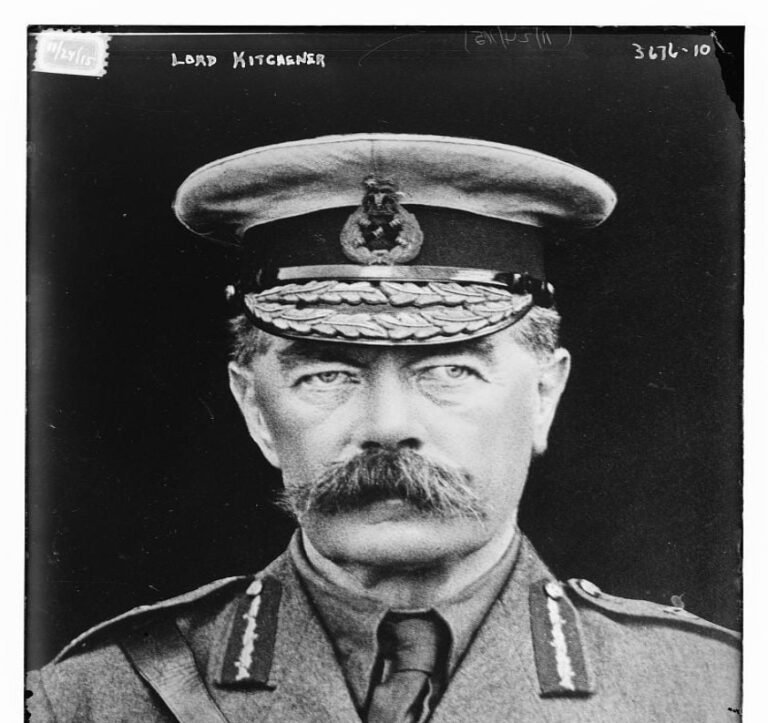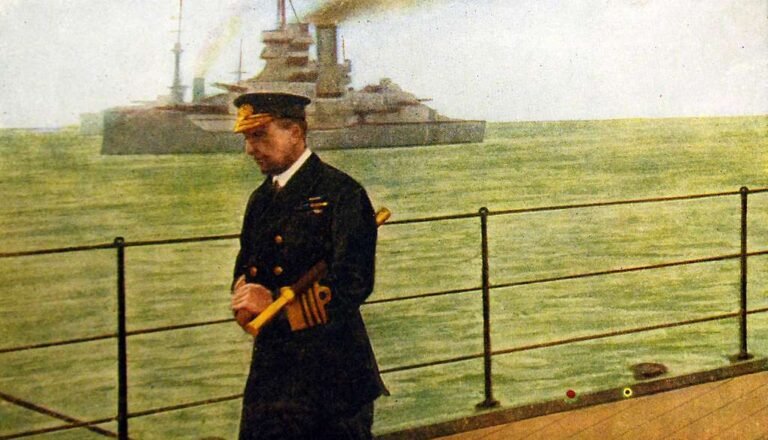The Royal Navy is one of the world’s oldest naval forces. It has a rich history and significant achievements.
Founded in the 16th century, the Royal Navy has played a crucial role in British history. It has protected the nation’s shores, supported global trade, and influenced major world events. From legendary battles to modern peacekeeping missions, the Royal Navy’s impact is vast.
Its fleet has evolved from wooden sailing ships to advanced, high-tech vessels. Understanding the Royal Navy’s history gives insight into its current role. It’s not just about warships and battles. The Royal Navy also engages in humanitarian efforts, disaster relief, and international cooperation. Dive into the fascinating world of the Royal Navy to see how it continues to shape our world today.
Origins And Early History
The Royal Navy has a rich and storied past. It is one of the oldest naval forces in the world. Its roots trace back to the small fleets of the early English kings. Over time, these fleets grew in size and power. They played vital roles in the defense of England.
As the need for trade and exploration grew, so did the need for a strong navy. This led to the development of the Royal Navy as a formidable force. The navy not only protected the shores of England but also ventured into distant waters. This marked the beginning of its expansive influence globally.
Formation Of The Royal Navy
The Royal Navy was formally established in the 16th century. Under King Henry VIII, the navy underwent significant changes. He invested in new ships and naval technology. This period saw the construction of the famous ship, the Mary Rose. The navy became more organized and efficient during this time. It laid the foundation for future naval dominance.
Queen Elizabeth I further expanded the navy. She recognized its importance for trade and defense. Her reign saw the rise of England as a naval power. Famous sea captains like Sir Francis Drake emerged during this era. They played key roles in enhancing the navy’s reputation.
Early Naval Conflicts
In its early years, the Royal Navy faced many challenges. One of the notable conflicts was with the Spanish Armada in 1588. The navy played a crucial role in defeating the Spanish fleet. This victory showcased the navy’s growing strength.
Another significant conflict was the Anglo-Dutch Wars. These wars marked intense naval battles with the Dutch Republic. The Royal Navy fought bravely to protect England’s trade interests. These early conflicts helped refine naval tactics and strategies.
Through these challenges, the Royal Navy established itself as a dominant force. It continued to evolve and adapt to new maritime challenges. This adaptability was key to its sustained success over the centuries.

Credit: www.royalnavy.mod.uk
The Age Of Exploration
During the Age of Exploration, the Royal Navy played a key role in discovering new lands. Their ships sailed across uncharted waters, expanding trade and influence. This era marked the beginning of British naval dominance.
The Age of Exploration was a transformative era for The Royal Navy, marking a time of daring ventures and ambitious quests. Imagine the thrill of setting sail into uncharted waters, driven by curiosity and a hunger for discovery. It was during this period that The Royal Navy established its reputation as a formidable force, one capable of navigating the vast and unpredictable seas. The Age of Exploration brought about monumental changes, shaping the future of maritime travel and expanding the reach of the British Empire.
Navigational Pioneers
The Royal Navy boasted some of the most skilled navigators of the time. Their expertise in using the stars and rudimentary maps to chart courses was unparalleled. Picture yourself as one of these navigational pioneers, standing on deck, eyes fixed on the stars, determining direction and distance. They innovated techniques that paved the way for safer and more efficient sea voyages.
The stories of these sailors are inspiring. Consider the courage it took to sail into the unknown, relying only on their knowledge and instincts. They developed tools like the sextant and the compass, revolutionizing navigation. What would it feel like to be among the first to use such tools? It’s a testament to human ingenuity and the relentless pursuit of progress.
Expanding The Empire
The Royal Navy played a crucial role in expanding the British Empire. As ships ventured further, they discovered new lands and resources, fueling Britain’s global dominance. Visualize a fleet of ships arriving at distant shores, flags unfurled, marking the beginning of new alliances and trade routes. This expansion was not just about power; it was about connecting cultures and fostering relationships.
The impact of these voyages still resonates today. They laid the groundwork for global trade and international relations. Have you ever thought about how your daily life is influenced by these historical connections? From the spices in your kitchen to the diversity of cultures around you, the legacy of The Royal Navy’s Age of Exploration is evident.
Engage with this fascinating history by considering the bravery and ambition that drove these sailors. What lessons can you learn from their pioneering spirit? How can you apply their determination to your own life and ventures?
The Napoleonic Wars
The Napoleonic Wars were a series of conflicts from 1803 to 1815. These wars involved many European nations. The Royal Navy played a crucial role during this period. They dominated the seas and influenced the outcome of the wars.
Key Battles And Strategies
The Royal Navy fought in several key battles. One of the most famous battles was the Battle of Trafalgar in 1805. Admiral Nelson led the British fleet to a decisive victory. This battle prevented Napoleon from invading Britain.
Another important battle was the Battle of the Nile in 1798. The British fleet, again under Nelson, destroyed the French fleet. This victory cut off Napoleon’s army in Egypt. It was a major strategic win for the British.
The Royal Navy used several key strategies. Blockades were one of their most effective tactics. The British blockaded French ports, restricting their trade and supplies. This weakened Napoleon’s economy and military capabilities.
Famous Naval Commanders
Several famous commanders led the Royal Navy during the Napoleonic Wars. Admiral Horatio Nelson is the most renowned. His leadership and tactics were crucial in many battles. Nelson’s bravery and skill made him a national hero.
Another notable commander was Admiral Cuthbert Collingwood. He fought alongside Nelson at Trafalgar. Collingwood took command after Nelson’s death and secured the victory. His leadership ensured the British maintained control of the seas.
Admiral Sir John Jervis also played a significant role. He won the Battle of Cape St. Vincent in 1797. His victory helped establish British naval dominance early in the wars. Jervis was known for his strict discipline and innovative tactics.

Credit: en.wikipedia.org
Technological Advancements
The Royal Navy has always been at the forefront of innovation. Over the centuries, its technological advancements have not only shaped naval warfare but have also influenced global maritime strategies. Let’s dive into some key milestones that highlight the Navy’s commitment to progress.
Introduction Of Ironclads
Imagine a time when wooden ships dominated the seas. Then came the ironclads—armored warships that changed the game. The Royal Navy introduced these formidable vessels in the mid-19th century, marking a turning point in naval engineering.
Ironclads were more resilient against cannon fire and could withstand harsh sea conditions. This advancement not only enhanced the Navy’s defensive capabilities but also its offensive reach. Can you picture the awe these iron giants must have inspired as they sailed through the waters?
Evolution Of Naval Weaponry
The Royal Navy’s evolution didn’t stop with ships. Naval weaponry saw significant advancements that boosted firepower and accuracy. Early cannons were replaced by more precise artillery, radically altering naval engagements.
With the introduction of torpedoes and guided missiles, the Navy could engage enemies from greater distances. This shift allowed for strategic advantages that were previously unimaginable. How do you think these advancements have influenced modern-day naval tactics?
The journey of the Royal Navy is a testament to its innovative spirit and ability to adapt to changing times. Each technological leap not only strengthened its fleet but also redefined naval warfare. What future advancements will continue this legacy of innovation?
World War I Contributions
The Royal Navy played a key role in World War I. It protected trade routes and blockaded enemy ports. This helped weaken the opposition and supply the Allies.
During World War I, the Royal Navy played a pivotal role in shaping the outcome of the conflict. Its contributions were critical in ensuring the success of Allied operations. The Royal Navy’s strategic maneuvers and steadfast dedication proved to be a cornerstone of victory. Understanding these contributions offers valuable insights into how naval power can influence global events.
Major Naval Engagements
The Royal Navy was involved in several significant battles during World War I. The Battle of Jutland, the largest naval battle of the war, tested the might of the British fleet against Germany’s High Seas Fleet. This encounter was crucial in maintaining naval dominance and securing maritime routes.
Another key engagement was the Gallipoli Campaign. Here, the Navy played a vital role in supporting the Allied forces’ attempts to secure a strategic foothold. These engagements highlighted the importance of naval strategy in warfare.
What if these battles had gone differently? Imagine how the course of history might have changed. The Royal Navy’s involvement ensured that the Allies maintained control over vital sea lanes, which was essential for supply and communication.
Role In Allied Victory
The Royal Navy’s blockade of Germany was a decisive factor in the Allied victory. By restricting supplies, the Navy forced Germany into economic hardship. This blockade weakened Germany’s ability to sustain its war efforts, contributing significantly to the overall success of the Allies.
Innovation and technology also played a role. The Navy’s use of new tactics, such as convoy systems, protected merchant ships from U-boat attacks. This ensured the safe passage of essential supplies to the front lines, bolstering the Allied forces.
Consider the impact of these strategies on the war’s outcome. The Royal Navy’s adaptability and foresight were instrumental in overcoming challenges posed by enemy forces. How can modern navies learn from these historical strategies to address current challenges?
Reflecting on the Royal Navy’s contributions during World War I reveals the immense power of naval forces in shaping global events. By understanding the past, you can better appreciate the complexities of naval warfare and its profound impact on history.
World War II And Beyond
The Royal Navy played a pivotal role during World War II and beyond. Its strategic importance in maritime warfare shaped global outcomes. From fierce battles to peacekeeping missions, the Navy’s legacy remains impactful.
Battle Of The Atlantic
The Battle of the Atlantic was crucial for the Royal Navy. It was a prolonged conflict against German U-boats. The Navy protected vital supply routes across the Atlantic Ocean. They ensured resources reached the Allies. Submarines posed a significant threat. Naval convoys became essential for safe passage. The Navy’s advanced tactics turned the tide. This battle was a test of endurance and skill.
Post-war Naval Operations
After World War II, the Royal Navy adapted to new challenges. Peacekeeping and humanitarian missions became priorities. The Navy supported international stability through its presence. They conducted exercises with allied nations. Their role expanded to include disaster relief. Modern technologies improved naval capabilities. The Navy’s commitment to global security continued. It remains a formidable force in the world.
Modernization Efforts
The Royal Navy focuses on upgrading ships and technology to enhance defense capabilities. New vessels and advanced systems ensure readiness for modern challenges. These efforts aim to maintain global maritime security.
The Royal Navy is not just a historical force; it is a dynamic institution that constantly evolves to meet modern challenges. Today, the Navy is heavily invested in modernization efforts that ensure it remains a formidable presence in global waters. These initiatives are crucial for maintaining strategic advantages and operational efficiency. Let’s take a closer look at how the Royal Navy is advancing through the adoption of new technologies and innovative training and recruitment strategies.
Adoption Of New Technologies
The Royal Navy is embracing cutting-edge technology to enhance its capabilities. From autonomous drones to advanced radar systems, the Navy is integrating new tech to improve surveillance and defense mechanisms.
Consider the impact of artificial intelligence in naval operations. AI helps streamline decision-making processes and boosts response times in critical situations.
Think about how this affects you as a taxpayer. Efficient use of technology can lead to cost savings and increased safety for naval personnel. Are you aware of how these advancements might influence global security dynamics?
Training And Recruitment
Modernization isn’t just about equipment; it’s about people. The Royal Navy is revamping its training programs to better prepare recruits for the challenges of modern warfare.
Training now includes simulations and virtual reality exercises. This offers recruits real-world scenarios without the risks, ensuring they’re better prepared for active duty.
Recruitment strategies are also evolving. The Navy is actively seeking individuals with tech skills and innovative minds. Could you see yourself or someone you know thriving in this new environment?
These modernization efforts are not just about maintaining status but about leading the charge in naval excellence. What role do you think such efforts play in the broader context of national security?
Cultural Impact
The Royal Navy shaped global culture through exploration and trade. Its influence spread British customs worldwide. Its voyages brought diverse cultures together, enriching societies with new ideas and traditions.
The Royal Navy, with its storied history, has left an indelible mark on culture across the globe. Its influence extends beyond naval warfare, shaping traditions, arts, and even language. Understanding this cultural impact not only provides insight into naval history but also into the ways the Navy has touched everyday life.
Naval Traditions And Ceremonies
Naval traditions are a cornerstone of the Royal Navy’s cultural impact. Think about how the “crossing the line” ceremony is celebrated when sailors cross the equator. This ritual, filled with humor and camaraderie, strengthens bonds among crew members.
Another tradition is the daily observance of the “rum ration,” which, though discontinued, remains a symbol of naval life. These practices foster a unique sense of community and continuity within the Navy. They remind us of the shared experiences that unite sailors across generations.
Influence On Popular Culture
The Royal Navy’s influence on popular culture is vast and varied. Consider how many films, books, and songs feature naval themes or characters. From the thrilling adventures in “Master and Commander” to the swashbuckling tales of “Pirates of the Caribbean,” the Navy’s presence is undeniable.
Naval slang has even seeped into everyday language. Terms like “shipshape” and “loose cannon” are now part of our vocabulary. This pervasive presence raises an interesting question: How much of our daily life is unknowingly influenced by naval heritage?
The Royal Navy, through its traditions and cultural influences, offers a rich tapestry of history and modern relevance. Reflecting on these impacts invites us to appreciate the depth and reach of naval heritage. How do you see the Royal Navy influencing your own world?
FAQs
What Does The Royal Navy Actually Do?
The Royal Navy protects the UK, defends its interests, and supports international peace. It provides humanitarian aid and conducts anti-piracy operations.
Is The Royal Navy Still Powerful?
The Royal Navy remains a powerful force globally. It boasts advanced warships, submarines, and cutting-edge technology. With a strong naval tradition, it plays a crucial role in international security. Its presence in strategic areas ensures maritime stability and defense. The Royal Navy continues to adapt and modernize, maintaining its influential status.
Is The Royal Navy The Same As The British Navy?
Yes, the Royal Navy is the same as the British navy. It is the United Kingdom’s naval warfare force.
How Big Is The Royal Navy?
The Royal Navy consists of around 30,000 personnel, including regular and reserve forces. It operates over 70 ships, including aircraft carriers, destroyers, frigates, and submarines. The navy plays a crucial role in national security, maintaining a strong maritime presence globally.
Conclusion
The Royal Navy holds a rich and storied history. Its ships and sailors have shaped the world. From battles to exploration, their legacy endures. The Navy’s impact remains significant today. Maritime security and global presence are their focus. They protect nations and uphold peace.
The dedication of its personnel is commendable. Their courage and commitment inspire many. Understanding the Royal Navy’s role helps appreciate its importance. A vital force on the world stage. They continue to sail forward. Always ready, always vigilant. They serve with honor and pride.
The Royal Navy’s journey is far from over.








